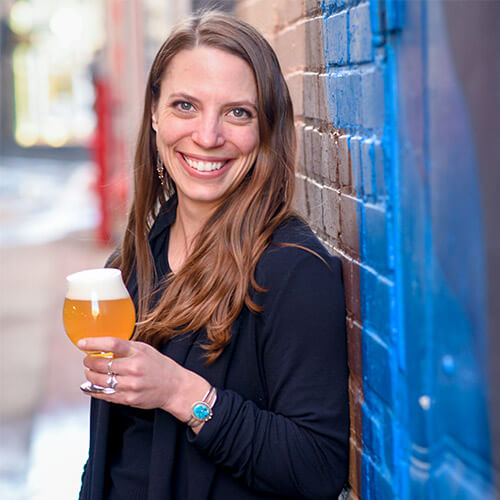The Brewers Association (BA) staff conducted the fifth annual Hopsource, a crowdsourced sensory exercise, in Yakima, Washington over three days at the end of September. Hopsource is an event created to gauge brewer interest in upcoming experimental public hop varieties by harnessing the power of dozens of noses to crowdsource hop variety acceptance. Hopsource is one small part of an industry wide effort to support and inform the United States Department of Agriculture, Agriculture Research Service (USDA-ARS) public hop breeding programs. By bridging the gap between brewers and researchers, a two-way communication channel is formed where public hop breeders may work towards releasing varieties of interest to brewers, and brewers can have an impact on new public hop varieties available to the industry.
The BA partnered with Yakima Valley Hops and DraughtLab to conduct and host Hopsource once again. Yakima Valley Hops hosted the three-day event where different flights of hop varieties were available each morning and afternoon. DraughtLab designed the hop sensory assessment to be short yet thorough, which provides convenience for brewers during their busy hop selection days in Yakima, while collecting valuable crowdsourced data. In this year’s event, participants independently evaluated a maximum of six hop samples in each flight. Samples were prepared using the American Society of Brewing Chemists (ASBC) Hop Grind Sensory Evaluation Method and were prepackaged into two-gram packets to increase standardization and maintain hygiene. Participants completed three questions through the easy-to-use phone application, SampleOx. They selected “all that apply” from a list of eight aroma attributes, gave a hedonic “liking” score from 1 to 10, and had space to provide additional comments.
This year, 24 varieties of advanced lines were assessed from the two USDA-ARS public hop breeding programs under the direction of Dr. John Henning in Corvallis, Oregon and Dr. Kayla Altendorf in Prosser, Washington. Each unique hop variety was evaluated by upwards of 35 participants per sample over the course of the event.
From the hedonic scores and the attribute selections, which included citrus, herbal/grassy, floral, pine, stone fruit, tropical, woody/earthy, and onion/garlic, information about each experimental hop variety can be gleaned from the data. The Net Liking Score (NLS), the average hedonic score, and the distribution bar chart of the hedonic scores shows which attributes best describe a hop and contribute to its relative acceptance. The data generated from Hopsource provides critical information to the USDA-ARS hop breeders who ultimately determine which varieties move forward towards commercialization.
As a public program, we are reliant on our stakeholders’ involvement, input, and support, therefore brewer acceptance is the be-all and end-all in hop breeding.
Dr. Kayla Altendorf, USDA-ARS Hop Breeder
Dozens of BA member brewers and other industry partners participated in Hopsource. Participants often commented on the importance of public hops as a complement to the commercial landscape and gave their support for these continued collaborative efforts. To highlight the importance of brewer and industry support, Dr. Altendorf shares, “Hopsource and the brewer feedback it provides is absolutely critical for making selection decisions within the public hop breeding program. As a public program, we are reliant on our stakeholders’ involvement, input, and support, therefore brewer acceptance is the be-all and end-all in hop breeding. My strategy as one of the USDA-ARS breeders is to look at data from multiple years and select and advance individuals that appear in the top more than once. It feels natural to harness brewer feedback on an annual basis through Hopsource.”
Thanks to all the individuals who stopped by Yakima Valley Hops for Hopsource this year. The BA looks forward to seeing new and returning noses in Yakima for next year’s event.






 Resource Hub
Resource Hub